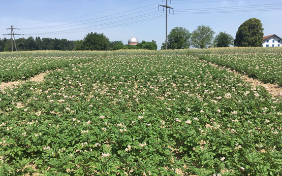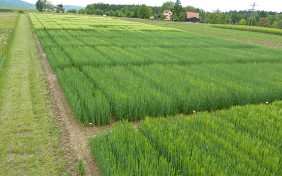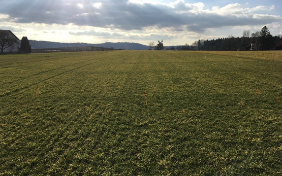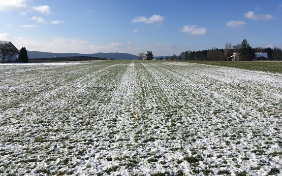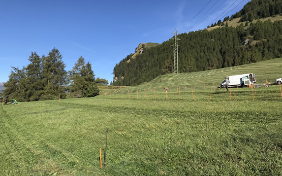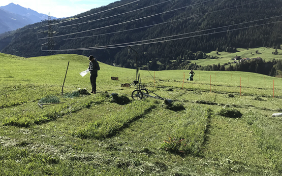Imbalanced fertilisation can lead to an undersupply of plants with essential nutrients as well as to the pollution of water bodies with leached nutrients. The nutrient supply necessary for sustainable production is highly dependent on climate and soil properties. The STYCS (‘Soil Testing and Yield Calibration for Switzerland’) trials were set up in order to test yield responses of different crops to soil nutrient content depending on site conditions. They enable us to check the suitability of soil extraction methods and to develop appropriate interpretation schemes for soil nutrient content. These serve as a basis for fertilisation recommendations and environmental monitoring.
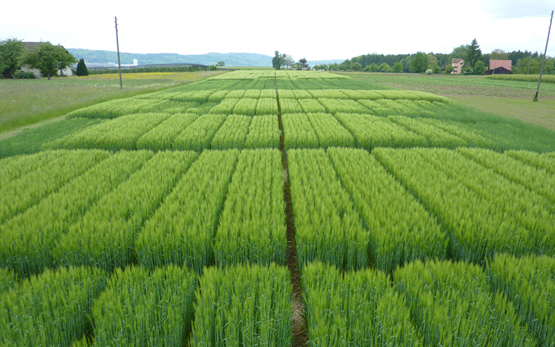
Trial Design
From 1989 to 1992, fertilisation trials for phosphorus, potassium, magnesium and lime were set up on six field sites in Zurich-Reckenholz (ZH), Rümlang-Altwi (ZH), Oensingen (SO), Ellighausen (TG), Cadenazzo (TI) and Grabs (SG) (the Grabs trial concluded in 2012). The soils are subtypes of Cambisol, Gleysol or Fluvisol. On all sites, phosphorus and potassium are both applied at six levels from 0 to 167% and magnesium at four levels from 0 to 150% of the theoretical crop nutrient off-take. The effect of liming is also tested at three sites (Oensingen, Ellighausen, Cadenazzo) in six treatments (0-4 t ha-1 CaO). The crop rotation consists of silage maize – sugar beet – winter wheat – rapeseed. In addition, the effects of combined phosphorus and potassium fertilisation on yield and botanic composition had been studied on a grassland site in Vaz Muldain until 2021. The treatments on all sites are spatially replicated four times.
Measurements
The topsoil (0-0.2 m) is sampled bi-annually after harvest of the main crop, the subsoil (0.2-0.3 m and 0.3-0.5 m) every four years. Available nutrients in the soil are determined by means of extraction with CO2-saturated water (phosphorus, potassium), CaCl2 (magnesium) and AAE10 (phosphorus, potassium, magnesium). Crop yields, nutrient content of the main and by-products and crop-specific quality parameters are recorded, which are in turn used to calculate nutrient removals and budgets.
Crop yields in the phosphorus series differ only slightly between treatments, which is indicative of large phosphorus reserves in the soils. After 30 years of zero-fertilisation, phosphorus-sensitive crops in particular (potatoes, barley) show yield losses. Critical soil phosphorus concentrations for optimum yields vary considerably between different crops, but site-specific pedoclimatic conditions have a significant influence on how strongly yields respond to soil phosphorus.
Contact
Key data
Topic: Site-specific fertilisation
Start years: 1989–1992
Design: randomized block, 4 replications
Zurich-Reckenholz (ZH)
Location: 47.430694, 8.522028;
440 m a.s.l.
Rümlang Altwi (ZH)
Location: 47.438614, 8.525506;
493 m a.s.l.
Oensingen (SO)
Location: 47.284153, 7.730769;
454 m a.s.l.
Ellighausen (TG)
Location: 47.609739, 9.142519;
507 m a.s.l.
Vaz Muldain (GR)
Location: 46.690327, 9.519557;
1185 m a.s.l.
Further Information
Key data
| Site | Soil type (WRB) | Soil texture | Precipitation | Temperature |
|---|---|---|---|---|
| Zurich-Reckenholz | Eutric Gleysol | slightly clayey loam (39% clay, 36% silt 25% sand, 2.7% org. C) |
1050 mm | 9.4 °C |
| Rümlang Altwi | Calcaric Cambisol | slightly sandy loam (22% clay, 30% silt, 48% sand, 2.1% org. C) |
1050 mm | 9.4 °C |
| Oensingen | Gleyic-calcaric Cambisol | slightly clayey loam (37% clay, 31% silt, 32% sand, 2.4% org. C) |
1030 mm | 9.0 °C |
| Ellighausen | Eutric Cambisol | clay loam (33% clay, 36% silt, 31% sand, 2.3% org. C) |
950 mm | 9.3 °C |
| Vaz Muldain | Gleyic Fluvisol | sandy loam (27% clay, 26% silt, 40% sand, 6.5% org. C) |
1040 mm | 4.9 °C |
Last modification 10.05.2021


